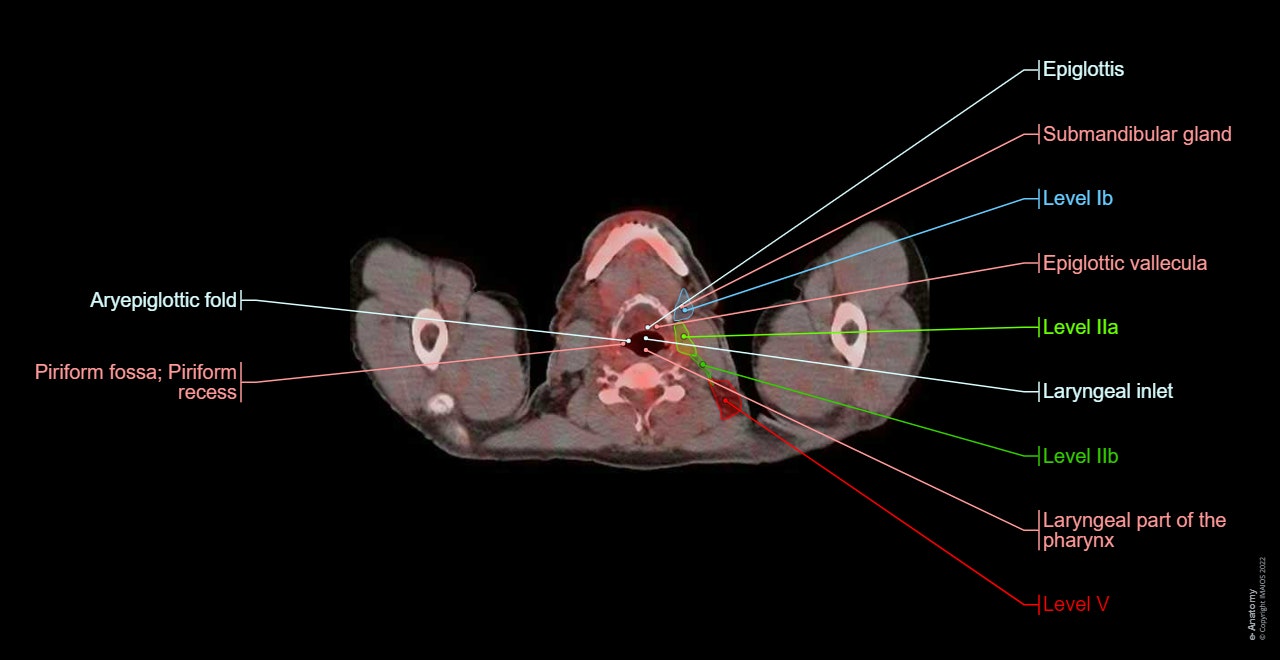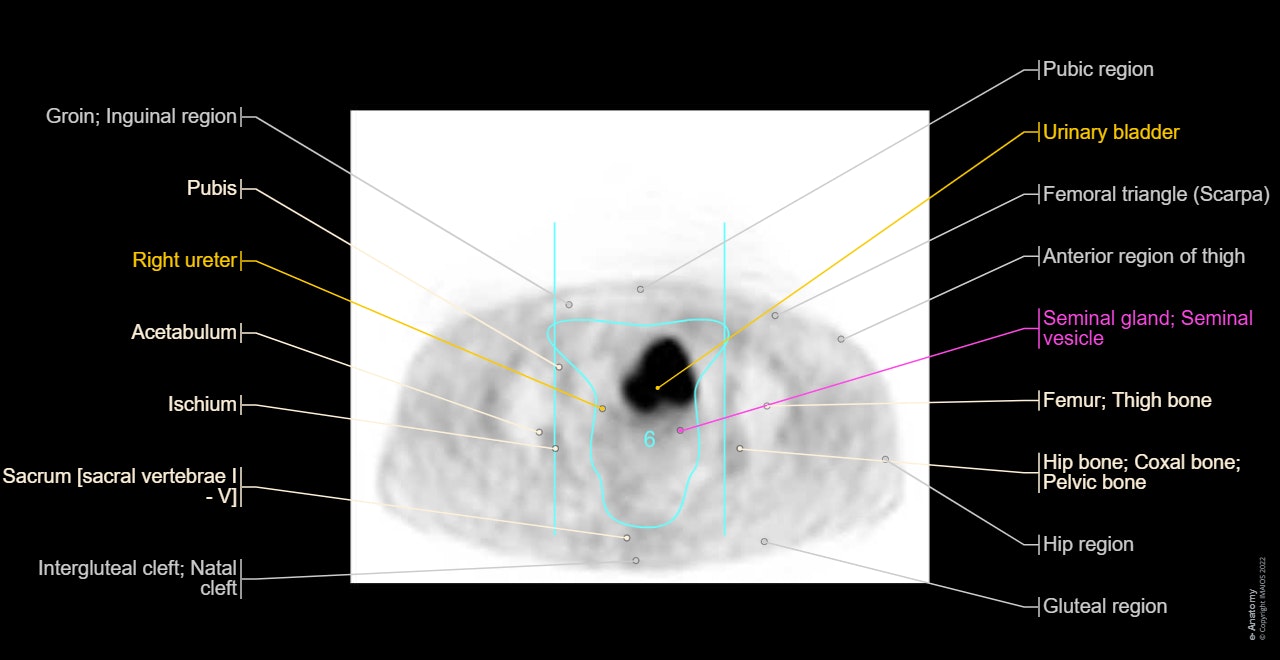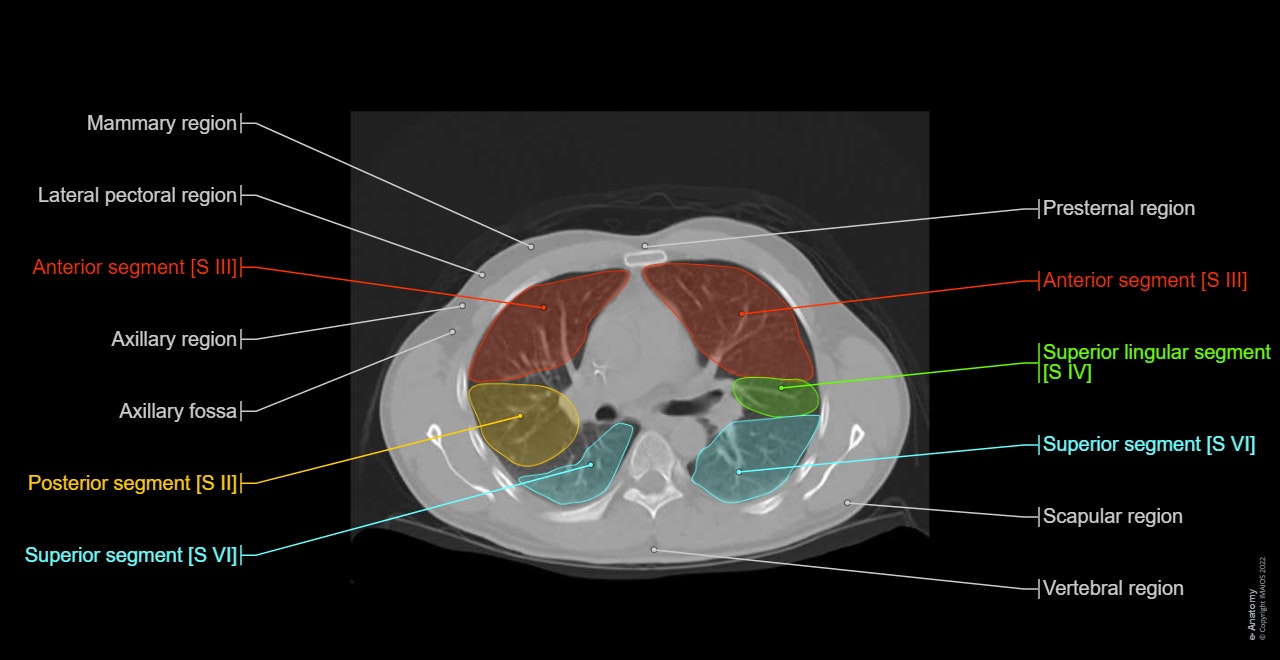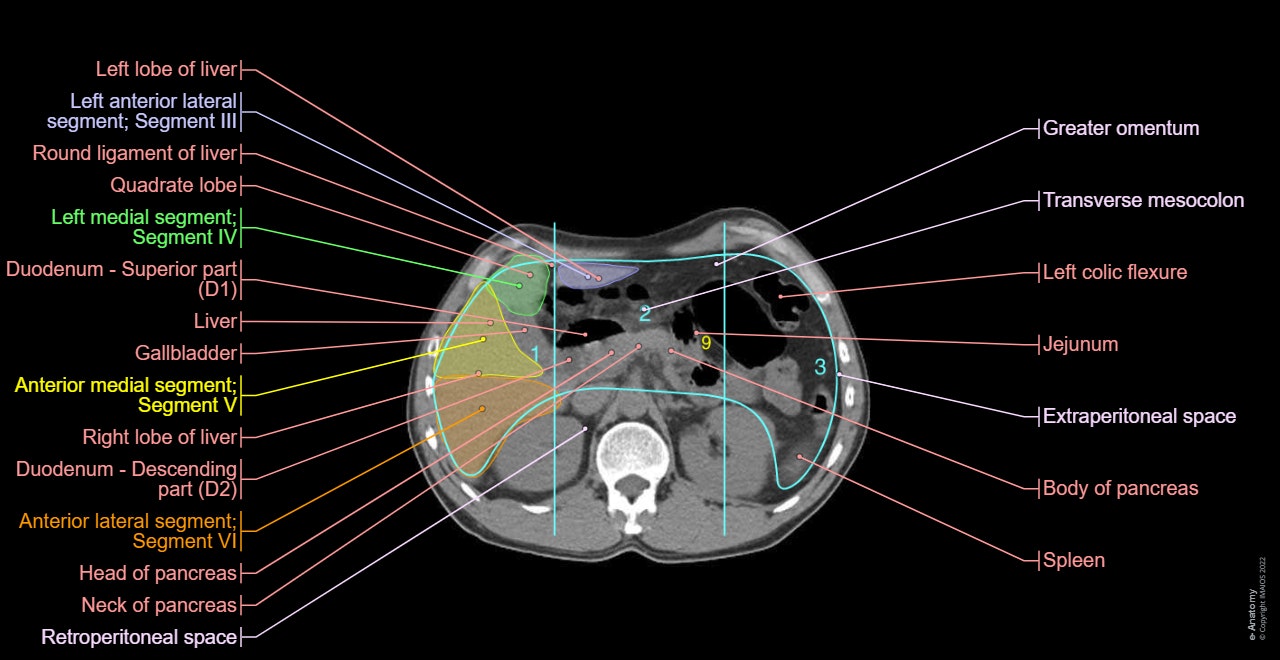
PET-CT atlas of the whole body
PET-CT atlas of the whole body
PET-CT images provided by G. Chuto - MD
This module is about the anatomy of the human body as studied when performing a PET scan with FDG injection.
It contains 280 images in axial section, ranging from cranial base to the root of the thighs, with over 250 anatomical structures labeled, with 4 selectable image types (PET, scanner, or PET-CT)
It is particularly useful for doctors and nuclear medical technicians, radiologists and oncologists, including the disease spread assessment of cancers.
PET-scanner images with FDG
The PET-CT images of a healthy male subject, were provided by G. Chuto - MD. There are four types of images, typically composed of a positron emission tomography combined with a scanner:
- PET-CT fusion: combining image scanner data and FDG tracer scintigraphy. These images are often very educational but are not used on a daily basis.

- CT (abdomen-mediastinum): whole body scanner images without injection with window function that allows the study of the soft tissues, including lymph node structures, mediastinum and abdomen.
- CT (lung-bone): stronger window function, allowing a better view of the pulmonary parenchyma and the lungs.
- PET: tomographic images with attenuation factor correction, allowing to view the areas fixing the tracer (e.g. heart, brain, urinary tract).

Anatomical structures labeled on a PET-CT
250 anatomical structures of the neck and trunk were labeled using only the visible structures studied through praxis on a PET scanner:
- The general anatomy presents the main regions of human body, useful in locating a tumoral process: axilla, quadrants of the abdomen and etc.
- The bone (skeletal system) roughly presents the different bones of the neck, trunk and root of the lower limbs in order to avoid overloading the module.
- The articular system presents the large joints of the human body, with particular focus on the spine.
- The muscles (muscular system) were exhaustively labeled, apart from the erector spinae muscles and certain muscles of the pelvic floor that are not identifiable on this scanner.

- The respiratory system includes the main structures from the nasal cavity to the bronchi.
- The bronchopulmonary segments were identified by labeled areas with the help of the classification of the Terminologia Anatomica (numbers vary depending on the source areas, e.g. Boyden).

- The thoracic cavity contains the large mediastinal regions and the cardiac structures.
- The digestive system includes the oral cavity, pharynx, oesophagus, stomach, large and small intestines, liver and pancreas. We have included here the spleen, which, however, is a lymphoid and not digestive organ.
- The hepatic segmentation represents the 7 segments of the liver by means of zones and labels.

- The abdominal cavity includes the different spaces (peritoneal, retroperitoneal, retropubic) and mesenteries (mesentery, mesocolon).
- The Peritoneal Cancer Index is presented in the form of zones numbered 1 through 12 of the different possible locations of peritoneal carcinomatosis. A diagram of this index is available in the classifications tab. This index is still not officially recognized but widely used in clinical practice.
- The urinary system is represented mainly by the kidneys and bladder.
- The male reproductive system was labeled in a simple way to quickly locate structures such as the seminal vesicles or the prostate.
- The endocrine glands include the thyroid, the thymus (illustrated despite its atrophying into adulthood) and the adrenal glands.
- The arteries were superficially labeled, primarily as they form basic anatomical landmarks.
- The veins include the upper and lower vena cava system as well as the portal system.
- The lymph nodes tab describes the lymph nodes as described in the Terminologia Anatomica – names often not used on a daily practice.
- The ganglionic areas pick up the classifications used in oncology and surgery (cervical and thoracic lymph nodes (IASLC)) in the form of differently colored regions.
- The nervous system is not easy to study on a CT scan without injection.
Languages and anatomical terminology
We used the Terminologia Anatomica to label all the anatomical structures, with translations available in English, French, Japanese, German, Chinese, Portuguese, Russian, Polish, Japanese, Korean, Italian and Spanish.





There is no content here

